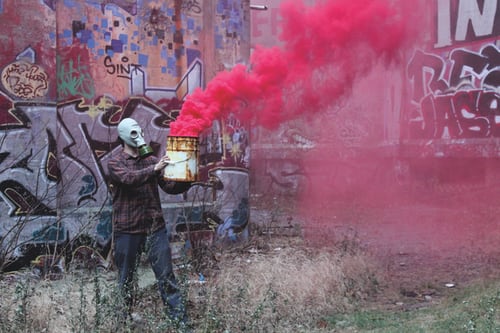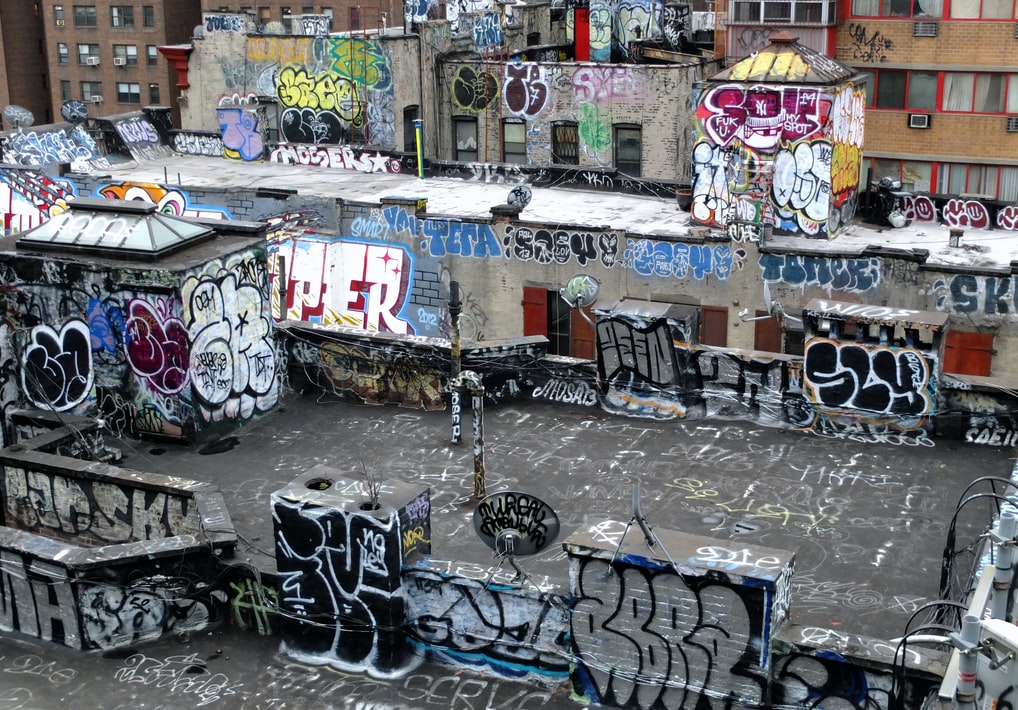As you might have learnt already from my previous pieces of texts, some graffiti artists just call themselves ‘writers’ as they believe that they are more into writing than creating art. However, there are many recognised artists who use graffiti letters to create text art. Some of them are:
Nowadays, artists and writers no longer have to vandalize locations so the world could see their graffiti art. The web allows them to create gorgeous and exquisite fonts that they can display publicly and legally, whether they decide to sell them or make them available for free.
Graffiti fonts have gained a lot of recognition in the world of typography as well as amongst artists and art in general. It’s hard to argue that graffiti fonts are rather unique, with their own sort of urban vibe. Usually vivid, with those embellished colours and outlines, they perfectly suit for catching the attention of readers, viewers, and spectators. Thanks to these eye-catching traits, nowadays one can often notice that graffiti fonts are widely used in advertising campaigns, especially for the younger generation, as it is something that seems to resonate with them. The fonts are also broadly used in cartoons, as the graffiti vibe often kind of complements the cartoons’.

If you just pay attention, you will notice that there are graffiti everywhere. It can be a large, glorious and professionally made mural in a “whole wall of a building” size. Or, it can be just a small hard-to-read inscription on a bus stop made by some bored kid while he was waiting for his transport to come, so he could finally get home, make a quick dinner, go on Netflix and keep filling up his sketchbook with drawings of cartoon characters while watching “BoJack Horseman”. Some would refer the first work to art, saying that the kid’s tag is vandalism. I remember walking with my mom to our favourite coffee-shop, and we passed by this crazy big and pretty tag (don’t know what was written there as it’s usually hard to read graffiti tags, but it still was nice!), surrounded by weirdly drawn smiling fish and dinosaurs who were smoking joints. My mom took a brief glance and said something like: “Oh, why they do it? It’s so ugly.” While I was astonished by how cool it was and how much I loved it. People say lots of things about graffiti-artists and their works: some like it, some don’t. However, what do graffiti-artists themselves have to say?
On March 15, 1918 in Moscow, the first issue of the futurist Newspaper was published under the editorship of V. Mayakovsky, D. Burlyuk and V. Kamensky. In his manifesto, Mayakovsky wrote:

Typographers and web designers work with letters and words by choosing typefaces and making decisions about things like point size and spacing. However, they are not the only ones whose passion is turning letters into art. In the 1960s, a bunch of young people from Philadelphia and another crew from New York began to use spray paint and other materials to leave inscriptions or create images on buildings and on the sides of subway trains. Thus, graffiti can range from stylised monograms – tags – to bright graphic images with the artist’s ‘signature’.
Even though those kids from America of the 60s are considered to be the first ones in the graffiti movement, the term itself and the act of leaving inscriptions on walls can be dated long before that. In the first century BCE, Romans regularly left messages on public walls, and Mayans were scratching drawings onto their surfaces. In Pompeii, ordinary citizens regularly marked public walls with political campaign slogans, magic spells and prose about unrequited love. Thereby, graffiti has often been and still is mostly about self-expression, identity, politics, art and empowerment.
Before talking about typography’s role in art and the way art can be conveyed through – or, better to say, with the help of – typography, it is worth mentioning that typography itself is already art. Some people understand and very broadly define typography as the way a text is arranged and presented. However, the definition of typography goes far beyond that. Actually, the Oxford Dictionary states that typography is the art of arranging letters and words. Thus, this technique makes the text clear, legible and visually appealing to the reader. Font style, appearance and structure are all involved in typography and those features aim to convey certain messages and evoke specific emotions. The chosen typeface and the way it works with the layout, grid and colour scheme will influence the text greatly because typography is what brings the text to life. That is the reason typography is so meaningful.